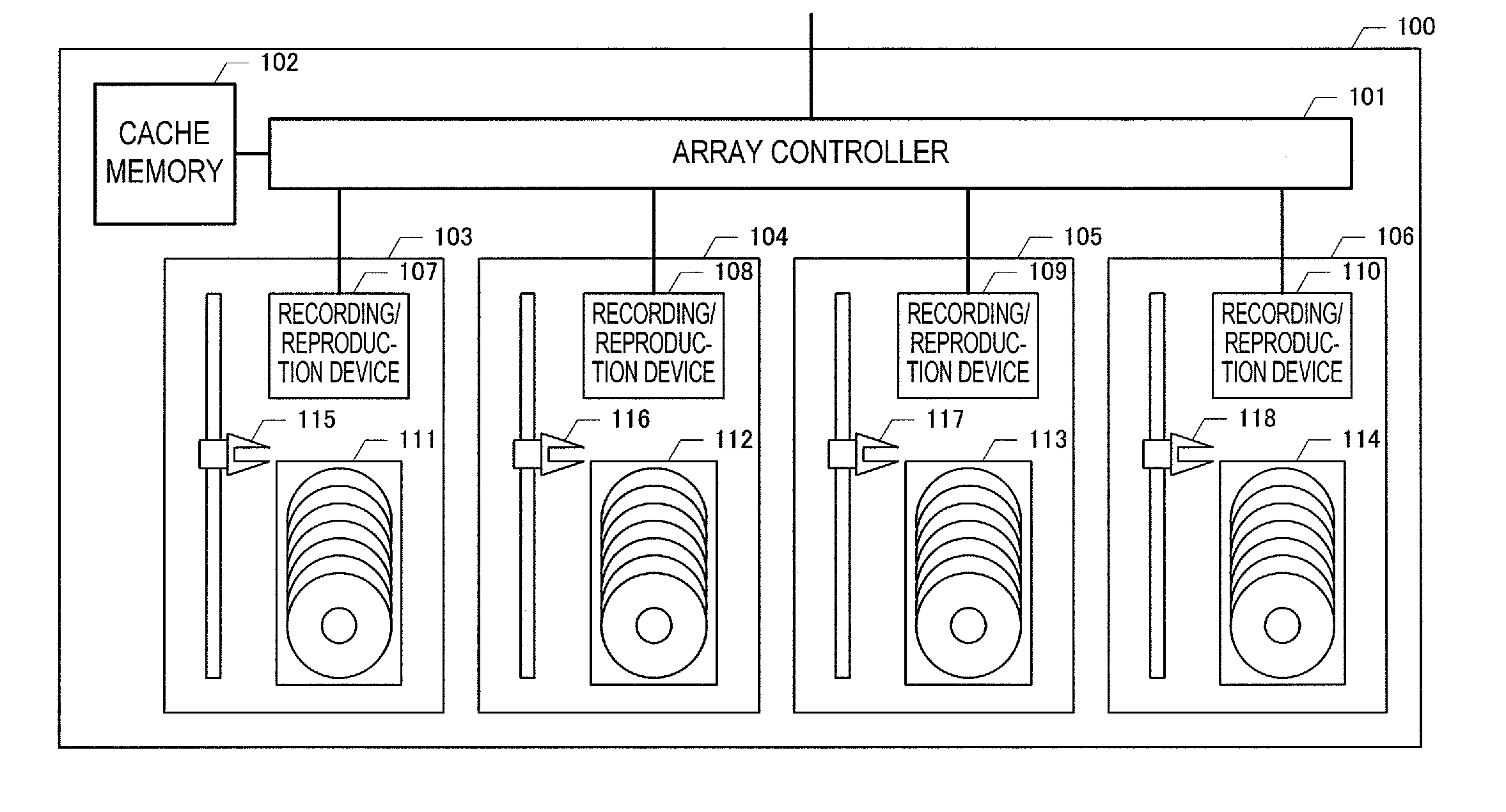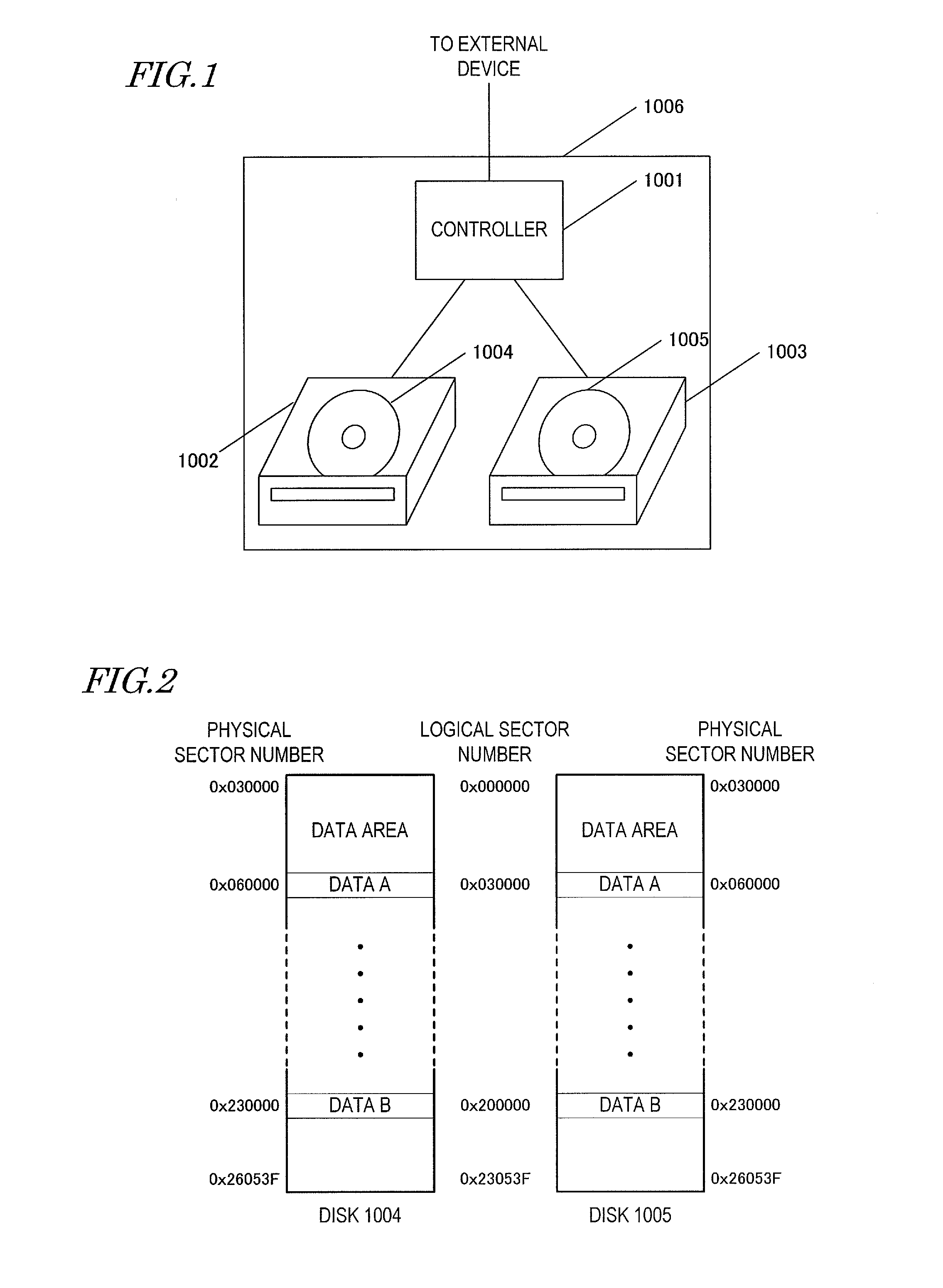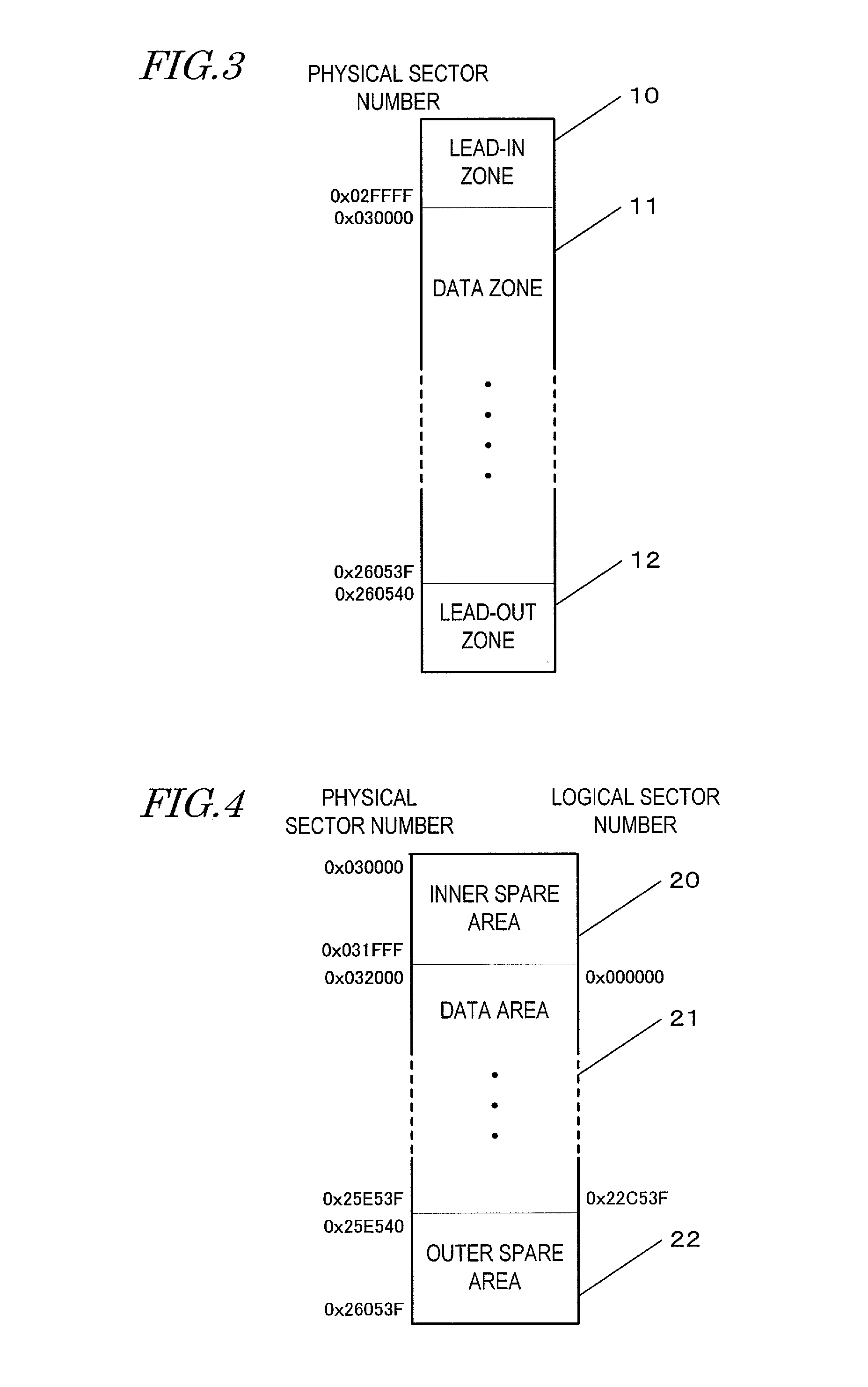Optical disk array device
an optical disk array and optical disk technology, applied in the field of data storage, can solve the problems of rf signal, rf signal, and reproducible data errors, and achieve the effect of continuously reproducing data and small maximum probability of read errors
- Summary
- Abstract
- Description
- Claims
- Application Information
AI Technical Summary
Benefits of technology
Problems solved by technology
Method used
Image
Examples
embodiment 1
[0071]FIG. 3 is a diagram for describing the format of an optical disk according to Embodiment 1 of the present invention. The optical disk includes a lead-in zone 10, a data zone 11, and a lead-out zone 12. FIG. 4 is a diagram for describing the format of the data zone 11 according to Embodiment 1 of the present invention. The data zone 11 includes an inner spare area 20, a data area 21, and an outer spare area 22. The inner spare area 20 is exemplary of a spare area that is located closer to the leading end than is the data area 21 along the direction of track recording / reproduction. The outer spare area 22 is exemplary of a spare area that is located closer to the trailing end than is the data area 21 along the direction of track recording / reproduction.
[0072]The lead-in zone 10 includes test areas for performing tests at production of the optical disk and upon recording in a drive, a management area in which to record management information concerning the format of the data zone ...
embodiment 2
[0106]A case will be described where, in the construction of Embodiment 1 described above, the optical disk 36 and the optical disk 37 are of the same lot manufactured by company A, while the optical disk 38 and the optical disk 39 are of the same lot manufactured by company B.
[0107]When receiving from an external device a command to initialize the optical disk array, the controller 30 issues a command to acquire disk information to the drives 36 to 39, and acquires manufacturer numbers and revision numbers of the optical disks 36 to 39. Based on the acquired manufacturer numbers and revision numbers, the controller 30 designates sizes of inner spare areas 20 of the optical disks 36 to 39 for the drives 31 to 34. The drives 31 to 34 format the optical disks 36 to 39 so that the sizes of their inner spare areas 20 are sizes as designated by the controller 30.
[0108]It is assumed herein that the optical disk 36 and the optical disk 37 are of the same manufacturer number and the same re...
embodiment 3
[0132]Embodiment 3 of the present invention will be described with reference to FIG. 11. FIG. 11 is a block diagram showing the construction of an optical disk array apparatus 65 according to Embodiment 3 of the present invention. The optical disk array apparatus 65 includes a controller 60 and drives 61 to 64. Optical disks 66 to 69 are mounted in the drives 61 to 64. The aggregate of optical disks 66 to 69 will be referred to as an optical disk array.
[0133]The optical disk array apparatus 65 is connected to an external device (not shown) via the controller 60, so that the whole functions as RAID4. For any recording data which is input from the external device, the controller 60 determines, on the basis of a logical address, a drive and a logical sector number to which it is to be recorded, and issues a recording command to the corresponding drive 61 to 63. Furthermore, a recording command for parity data, which is generated from the recording data that is input from the external d...
PUM
 Login to View More
Login to View More Abstract
Description
Claims
Application Information
 Login to View More
Login to View More - R&D
- Intellectual Property
- Life Sciences
- Materials
- Tech Scout
- Unparalleled Data Quality
- Higher Quality Content
- 60% Fewer Hallucinations
Browse by: Latest US Patents, China's latest patents, Technical Efficacy Thesaurus, Application Domain, Technology Topic, Popular Technical Reports.
© 2025 PatSnap. All rights reserved.Legal|Privacy policy|Modern Slavery Act Transparency Statement|Sitemap|About US| Contact US: help@patsnap.com



